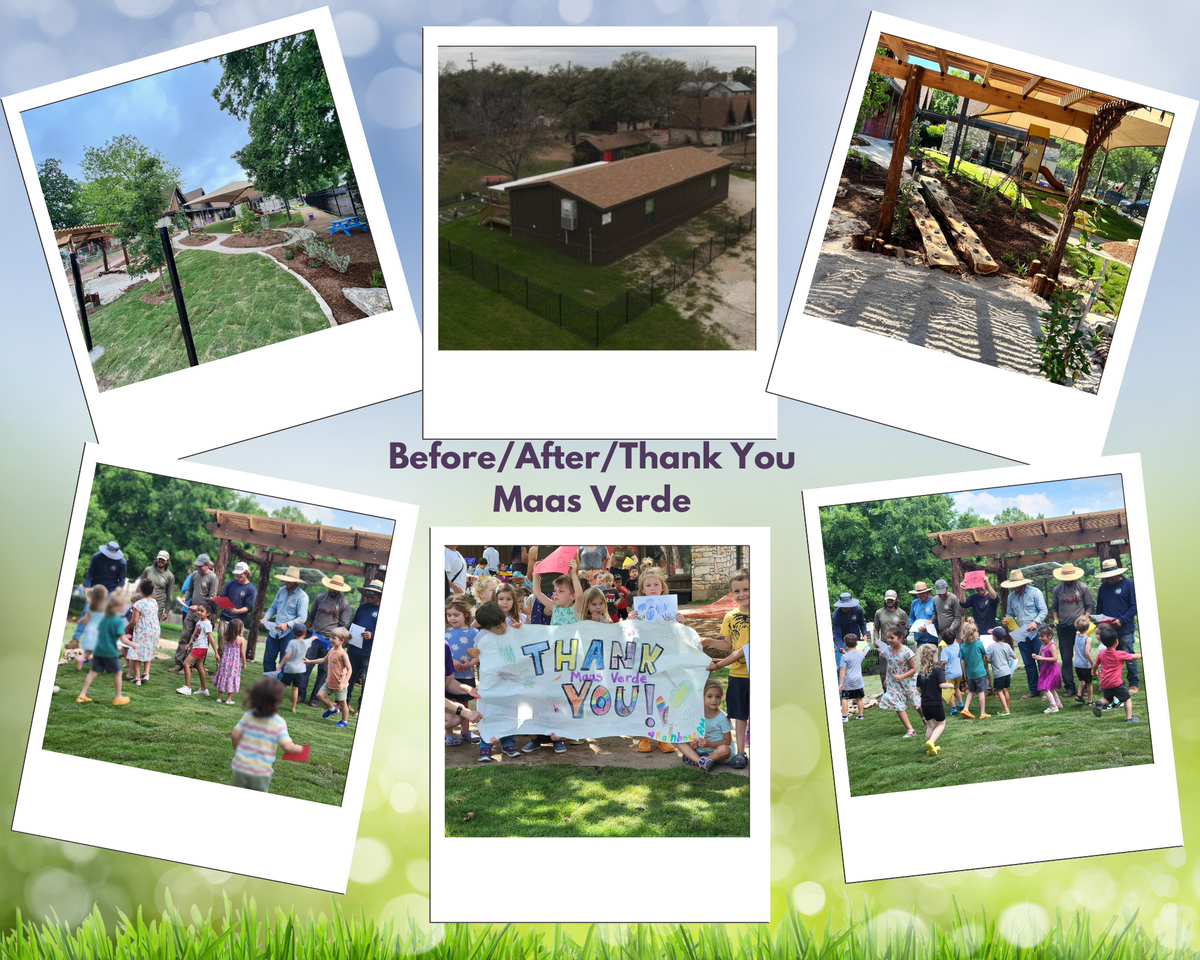A long-time vision has been fulfilled.
Back in 2014 when I arrived at St. George’s School and saw the incredible playground space I started dreaming of creating an outdoor learning environment. There was so much potential to create the type of environment I remembered growing up in. I think my tomboy side came back to life and so I put into place a vision to create an outdoor space that children would thrive in.
How do you remember playing as a young child?
Most people when answering this question have memories of playing outside (running, climbing trees, swinging, sliding, rolling, discovering nature, and exploring). Growing up in the Texas Hill Country I remember the beautiful rivers and limestone boulders. The common ingredient in all these memories is free unstructured play.
This type of open-ended play is one of the ways in which children learn to think both cognitively and emotionally. So many skills are developed when children have the freedom to venture out and explore what nature has to offer. Their understanding of how things work and the peace they feel when connecting to nature is unmistakable.
Often times when I tour families or potential new staff I end the tour with this question, “Did anything stand out to you?” And the answer I receive is, “Yes, the children and staff are so happy here.” I am convinced that a big part of that answer has to do with our outdoor learning environment.
Engaged children are happy children, and happy children make happy teachers. Our indoor curriculum is robust and engaging for children, but so is our outside curriculum. There are many obvious benefits of outdoor play, such as physical fitness and gross motor development, but what about the not-so-obvious?
Outdoor learning environments:
- Improve self-regulation by reducing stress and mental fatigue. It also increases attention span and decreases feelings of fear and anger. Children are more likely to follow instructions when they are connected to something or someone and don’t feel boxed in with a bunch of “nos and don’ts”.
- Promote cognitive development by increasing children’s level of interest and focus. A rich outdoor learning environment also encourages a lot of math, science, and vocabulary.
- Promote imaginative and collaborative play because of the increased opportunities to negotiate with others and use items found in nature in creative ways.
- Promote self-confidence because many of the features involve taking risks and seeking out adventure. It’s also noted that increased concentration and resistance to sudden impulses are seen in children who play outdoors.
- Promote environmental stewardship by shaping children’s respect for nature at a very early age. When teachers explain to children what plants they can and can not pick children learn to value plants.
The Outdoor Learning Environment movement points out key features that promote cognitive, physical, emotional, social, and spiritual development. These features are :
- More than 2 gross motor activity elements
- Trees, shrubs, vines, plants
- Topographic variations such as mounds, terraces, and slopes
- A variety of ground surfaces, i.e. mulch, grass, rocks, boulders, wood chips, and logs
- Looping pathways for riding bikes and push toys
- Garden plants and vegetables
- Water features
And I’m pleased to say we have now incorporated all of these recommended features into both of the playgrounds.
This vision would not have happened without the help of professionals who are as keen on providing spaces for children to thrive in as I am. As luck would have it, I was introduced to an amazing team of people through Marc Opperman, who now works for Maas Verde. When starting this project back in 2017 Marc was helping the original designer of our outdoor learning environment, but life took her in a different direction. The vision I thought was lost because very few really understand the complexity of creating an outdoor learning environment. But again, as luck would have it Marc and I crossed paths, and the project was given new life. Marc, now working with Maas Verde, a family-owned and operated company, knew how to get the job done.
It takes a great deal of creativity and knowledge about early childhood playground regulations to incorporate all the key features for children ages 3 months-5 years. I can’t say enough about the ingenuity and thoughtfulness that went into each feature. The Maas Verde team has been incredible to work with. And without this team of dedicated people who clearly have a vision to “build community through landscape,” my vision might not have happened. So thank you from the bottom of my heart for helping this 9-year-old vision come to fruition.

